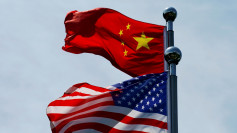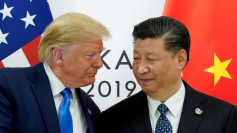The central bank of China has trimmed down it's short-term borrowing for the first time since 2015. It's purpose: To resuscitate growth by cutting its 7-day reverse repurchase rate to 2.50 percent from 2.55 percent.
Furthermore, Chinese authorities infused another 180 billion yuan ($26 billion) of cash into the monetary system via open-market operations.
Lately, the People's Bank of China took steps to raise liquidity. For the first time since early 2016, the central bank has reduced its interest rate on its one-year medium-term borrowing facility bonds.
It also gave banks one-year lending of 200 billion yuan ($29 billion) to restore stability to the banking system. It is speculated that China's central bank will soon slash its new prime benchmark loan rate, reducing mortgage rates and boosting credit.
Previously, China disappointed shareholders with a gross domestic product growth of only 6 percent year-on-year in the third quarter, representing the slowest pace since the first quarter of 1992. The latest data on the industrial economy of China illustrates the pervasive downturn in the manufacturing sector of the country.
However, data released by China's National Statistics Bureau (NBS) on fixed asset accumulation, capital acquisitions, real estate, and construction development showed the lowest growth rate since the launch of the formal record-keeping process in November 1999.
Slow global economic growth and increased foreign instability are some of the main culprits for the country's downturn and notably because of the uncertainty resulting from its trade dispute with the US, which forces businesses to restrict their investments.
In contrast, increasing pork prices due to the epidemic of African Swine fever have culminated in the highest increase in food inflation in China. In October 2019, the measure also surpassed the government's goal of about 3 million.
The overall index of pork prices in 16 provincial-level regions tracked by the Ministry of Agriculture and Rural Affairs has been retreating for two consecutive weeks since the beginning of November.
China's economy has been dealing with a lot of strains in the trade front of late. Analysts believe that by 2020, the rate of economic growth will slip below 6 percent. Therefore, more rigorous measures are needed to restore economic health.
Although Washinton and Beijing are close to reaching a trade deal with the latest updates, Chinese commerce officials have recently removed their four-year moratorium on imports of US poultry. Beijing, though, is not supposed to profit from a 'Step 1 ' trade deal with the United States directly.





